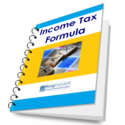Wouldn’t it be nice if any extra money with you could earn a good rate of interest, instead of the dismal rate that you get from your savings account? There is a great way to achieve this – through hybrid accounts and auto-sweep facility. Read on…
| Almost all of us would have some extra money lying in our bank accounts. The amount can be small or large, but most of us do have spare money in our regular savings account that is either too little to invest somewhere, or is lying there while we think about spending or investing it. |
This money is not totally unproductive – you do get the regular savings account rate of interest on it, which is in the range of 4% for most banks.
But can this money not work harder for us? Can it not earn a little more while it is lying idle?
It would be really great if this was possible, especially for some of us who are so lazy that they keep large sums lying in their savings accounts.
Well, it is possible – through auto sweep facility (also called “Flexi Deposit Scheme” by some banks).
What is auto sweep facility?
It is a great service, that combines the liquidity of a regular savings bank account with the high yield of a fixed deposit (FD).
In a nutshell: An amount in excess of a pre-determined amount is automatically transferred to a fixed deposit (FD). Thus, you earn a high interest rate on such amounts. When you want to withdraw, such FDs are automatically broken, and you can withdraw just like a normal savings account.
How does the auto sweep facility work?
- You decide the maximum amount that you want in your account. This is also called the threshold limit.
- You decide the amount for which the FDs need to be created.
- You decide the tenure of these FDs
After this, technology takes care of everything!
Whenever the amount in your account becomes more than the sum of the maximum amount you specified (point 1 above) and the FD amount (point 2), an FD is created for the specified amount and the specified tenure (in point 3). (This is called Sweep-in)
Whenever such a situation happens, a new FD is created. This means that any amount that you deem as excess earns the interest rate of an FD!
Some banks also offer innovative investment avenues – for example, investing the amount in liquid or money market (MM) mutual funds instead of investing in FDs.
Cost
The auto sweep facility is offered at no extra cost by most banks. Yes, this excellent facility is absolutely free!
Interest Rate
The interest rate offered on these auto sweep FDs is the same as the rate offered on regular FDs of that duration.
This means that instead of the paltry interest on the savings account, you can earn returns in the range of 8% – 9%.
Liquidity
The auto-sweep facility is extremely liquid. You can operate the account exactly like a regular bank account.
If the amount that you want to withdraw (through an ATM, cheque, etc.) is more than the amount in your account, one of the FDs would be broken immediately (this happens automatically), and you would get the money. (This is called Sweep-out or reverse-sweep)
The entire process is totally seamless – you wouldn’t even know that an FD has been broken till you see your account statement!
Most banks follow the FILO (First In Last Out) approach for breaking the FDs. Thus, if an FD has to be broken to provide for a withdrawal, the most recent FD is broken first.
Usually, there is no penalty for breaking these FDs.
Example
Let’s use an example to understand this better.
Let’s say you opt for the following:
The threshold limit: Rs. 10,000
Amount for which the FDs need to be created: Rs. 5,000
The tenure of the FDs: 6 months
Suppose the balance in your account is Rs. 12,000, and your salary of Rs. 17,000 is deposited in the account.
The balance becomes Rs. 12,000 + Rs. 17,000 = Rs. 29,000.
At this time, since the amount is over Rs. 15,000 (Rs. 10,000 threshold + Rs. 5,000 per FD), the bank’s computer would automatically create 3 FDs of Rs. 5,000 each.
Thus, you would have 3 FDs of Rs. 5,000 each, and the account balance would be Rs. 14,000.
Now, let’s say you have to withdraw Rs. 3,000 for household expenses. You withdraw it from the ATM, and the account balance reduces to Rs. 11,000.
Then, you also write a cheque for Rs. 1,500 to pay your credit card bill.
As soon as this cheque clears, the account balance reduces to Rs. 9,500, which is below the threshold limit of Rs. 10,000. Thus, the bank would break 1 FD, and deposit the amount in your account.
Thus, you would have Rs. 14,500 in your account, and would also have 2 FDs of Rs. 5,000 each.
(The calculation would be exactly the same even if you withdrew Rs. 1,500 from the ATM instead of writing a cheque)
Which banks offer the auto sweep facility?
Almost all modern banks offer this facility, although it can be called by different names, like:
- Auto Sweep Account
- Sweep-In Account
- Flexi Deposit Scheme
- Flexi Fixed Deposit
- Premium Savings Account
- Multi Option Deposit (MOD)
- Savings Plus
- Freedom Deposit
- Two in One (2-in-1) Account
Some of the banks that offer this facility are:
- ICICI Bank
- State Bank of India (SBI)
- State Bank of Mysore
- State Bank of Patiala
- State Bank of Bikaner and Jaipur (SBBJ)
- HDFC Bank
- Axis Bank (UTI Bank)
- Corporation Bank
- IDBI Bank
- Kotak Mahindra Bank
- Development Credit Bank (DCB)
- Oriental Bank of Commerce (OBC)
- Indian Bank
- Global Trust Bank (GTB)
- Andhra Bank
- Jammu and Kashmir Bank
- Citibank
- Indusind Bank
Other articles you might be interested in:
- Equity Investment is Risk Free – Here’s the Proof
- Income Tax (IT) treatment of House Rent Allowance (HRA)
- Only paid out arrears to be subject to TDS for government employees
- An introduction to Technical Analysis
- Retirement money: How to invest, where to invest
- Do you have an SIP? Don’t stop it!
- Indian banks hike FCNR, NRE deposit rates
- Renting vs Buying: To buy a house or rent it?
- RBI proposes drastic reduction in clearing charges for outstation cheques
- Definition of Residential Statuses: Resident, RNOR, NRI, PIO
- An Introduction to Islamic or Shariah Compliant Banking
- Early retirement – Why a fixed deposit (FD) is not a good choice





